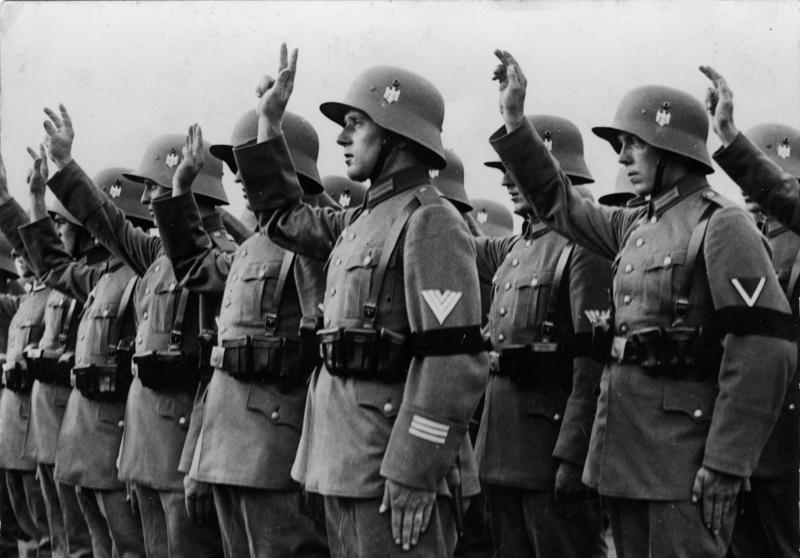Since 1916, the Imperial German Army began to replace the traditional boiled leather pickelhaube with a stahlhelm during the First World War.
The Stahlhelm has a special "coal bucket" shape, so it becomes a clearly identifiable military symbol and is a common military political propaganda for both sides of the war.
.jpg)
The word "Stahlhelm" was also the name of the "steel helmet group" of the paramilitary nationalist organization that emerged in Germany in the late 1918 period.
After the war, the German Bundeswehr continued to call their standard helmet Stahlhelm, but the design was based on the American M1 helmet. However, continued to use the original German design, until either troop switched to the new M92 Aramid helmet.
The Stahlhelm was designed by Dr. Friedrich Schwerd of Hanover. In the early 1915, after being ordered to travel to Berlin, Dr. Schwerd published a head injury study on the battle and suggested the use of steel helmets. He therefore took over the task of designing and manufacturing the right helmet [3]; basically based on the 15th century lightweight helmet "sallet", which provides good protection for the head and neck
Germany exported versions of the M1935 helmet to various countries. Versions of the M1935 Stahlhelm were sent to Republic of China from 1935 to 1936 and M1935 helmet was the main helmet of the Chinese Nationalist Army during World War II.

Some countries have modeled the M1935 to design their own helmets, which were not used in various countries until the 1970s.
Switzerland used a helmet, designated the M1918, that was roughly similar to the M1916, but had a shallower, wider and more rounded crown and skirt. This was to protect against the harsh winter winds of the alpine regions.
 English
English German
German French
French Russian
Russian Spanish
Spanish Japanese
Japanese Korean
Korean Portuguese
Portuguese Ukrainian
Ukrainian Arabic
Arabic Italian
Italian Afrikaans
Afrikaans Albanian
Albanian Armenian
Armenian Azerbaijani
Azerbaijani Basque
Basque Belarusian
Belarusian Bulgarian
Bulgarian Catalan
Catalan Croatian
Croatian Czech
Czech Danish
Danish Dutch
Dutch Estonian
Estonian Filipino
Filipino Finnish
Finnish Galician
Galician Georgian
Georgian Greek
Greek Haitian Creole
Haitian Creole Hebrew
Hebrew Hindi
Hindi Hungarian
Hungarian Icelandic
Icelandic Indonesian
Indonesian Irish
Irish Latvian
Latvian Lithuanian
Lithuanian Macedonian
Macedonian Malay
Malay Maltese
Maltese Norwegian
Norwegian Persian
Persian Polish
Polish Romanian
Romanian Serbian
Serbian Slovak
Slovak Slovenian
Slovenian Swahili
Swahili Swedish
Swedish Thai
Thai Turkish
Turkish Urdu
Urdu Vietnamese
Vietnamese Welsh
Welsh Yiddish
Yiddish




